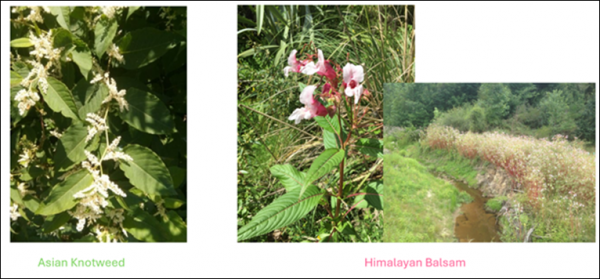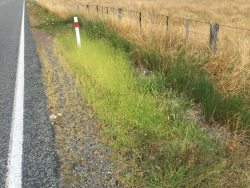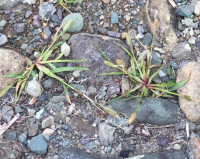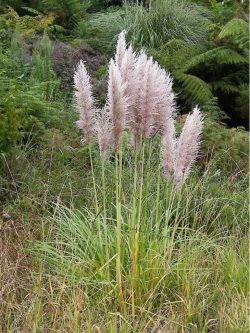Learn how to spot key pest species and report them to our Biosecurity Team to help protect your land and the wider environment.
The Motueka Valley is home to a number of well-established pest weed species, many of which have been present in the catchment for many decades. Following the July 2025 flood, landowners should remain alert to the increased risk of these weeds spreading due to floodwaters.
This guide (pdf 412 KB), created by our Biosecurity Team, shows most of the known weed species currently present in the Motueka Valley to help you identify them on your land.
In the Motueka Valley, we particularly urge landowners to be on the lookout for Asian knotweed and Himalayan balsam. These are classified as eradication pest species under the Tasman-Nelson Regional Pest Management Plan. While both species are currently only present in small numbers in the Motueka Valley, flooding can significantly increase their ability to spread. With early action and support from landowners, we can stop these weeds before they become widespread.

→For more on why Asiatic Knotweed is a problem and how to manage it, check out the Asiatic Knotweed Factsheet.
Sustained Control Pest Plants are targeted for long-term management to limit their spread and reduce their impact, rather than being completely eradicated. By helping us spot the plants listed below, you’ll play a key role in stopping them from spreading further.

Yellow bristle grass
Yellow bristle grass is a fast-growing C4 species known for producing seedheads that are unpalatable to cattle for up to five months of the year. In the Motueka Valley, it is well established, particularly around Tapawera, though its current spread is largely confined to roadsides, where it has been unintentionally dispersed through roadside mowing. It is also present on West Bank Road and Waiwhero Road.

Juvenile bristle grass
This invasive grass poses a serious risk to pasture productivity. It can rapidly colonise bare paddocks and form dense monocultures, outcompeting slower-growing C3 pasture species. Given the nature of recent flood events and regular vehicle and stock movement, its seed is likely to have spread to other parts of the Valley.
Landowners are encouraged to stay vigilant, particularly in areas where pasture has been disturbed, and to contact the Council’s Biosecurity team for advice on managing infestations.

Purple pampas
Purple pampas grass was once actively managed under the Council’s various Regional Pest Management Strategies until 2019. However, due to the difficulty of controlling it effectively, it was not included in the current 2019–2029 Regional Pest Management Plan for most of Tasman (with the exception of parts of the west coast of Golden Bay). A single mature plant can produce up to 100,000 wind-dispersed seeds each year, capable of spreading many kilometres from the parent plant. It readily colonises disturbed or bare ground. Since the easing of required control in 2019, purple pampas has already spread significantly in the Motueka Valley catchment area and has the potential for rapid, further post-flood spread.
Although purple pampas is palatable to stock, it forms dense thickets that exclude desirable pasture species and can harbour rodents. It is also recognised as a significant pest in forestry areas.
Other widespread pest plants:
Gorse, broom, blackberry, and old man’s beard - are also expected to take hold in flood-affected areas, especially on scoured, cleared, or silt-covered ground. Convolvulus (Calystegia) is another invasive species abundant in the Motueka Valley, and it can be particularly difficult to control once established.
Flood-affected landowners bringing in hay for supplementary stock feed are encouraged to take extra care when sourcing feed - especially from outside the region. Hay can inadvertently carry seeds from pest weed species that may not currently be present on your property.
Problematic species such as giant buttercup, ragwort, or certain exotic Carex and Juncus species can easily be introduced this way, creating long-term weed control issues.
Before purchasing or transporting hay, it’s a good idea to speak with the supplier and ask whether there are known weed species in the paddocks where the hay was harvested. If possible, avoid bringing in material from areas with a known presence of pest weeds that are absent from your property.
-----------------------------------------------------------------------------
A little vigilance now can prevent much larger weed management challenges in the future. Landowners are encouraged to monitor disturbed areas closely, and if you need advice or support with identifying or controlling pest weeds, please contact the Council’s Biosecurity Team.